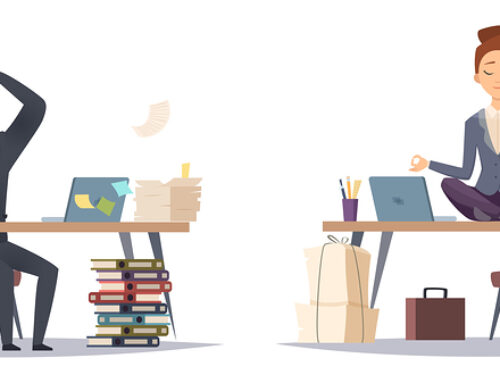When we first started the #NPCOMMLIFE series, we heard from several of you needing help with your to-do lists.
To-do lists are supposed to make our lives easier, but they can quickly become another hassle when you have so many options out there.
Kivi and I have tried A LOT of shared to-do lists including Remember the Milk, Basecamp, and Asana. We have now settled on Google Keep since we also use other Google business products. It’s working….so far.
In addition to Keep, I also have three whiteboards of various sizes in my office alone, several calendars both online and off, and regular ol’ notepads and post-its.
But getting your to-do lists in order shouldn’t always be on your to-dos!
Resources on Getting To-Dos Organized:
Why You Never Finish Your To-Do Lists at Work (And How to Change That)
How to Actually Get Sh!t Done With a To-Do List
These To-Do List Methods Will Help You Finally Get Organized
I decided to ask our awesome All-Access Pass Holders in our Facebook Group how they managed their to-dos and this is what they said:
Sarah: “I’m all about Trello for managing multiple projects at once on top of regular social media and email. When it comes to my day-to-day to do list, for me nothing beats a good ole paper list!”
Thomas: “Ooh … I love, love, love WorkFlowy. But I think the specific tool matters less than the system. I’m a Getting Things Done guy from way back. I’ve changed tools several times over the years, but my system has remained the same.”
Danielle combines those two: “I do David Allen’s Getting Things Done method using Trello. It works wonders.”
Melanie: “I have an Excel file to track upcoming projects, but use a paper list with little squares to fill in for current items. It’s broken into two sections: This Week and To-Do (ie: not due this week). And I sometimes utilize Sarah Knight’s “must-do” technique, where you take a list that’s completely overwhelming and choose 3 things that must get done. It helps maintain progress when there are too many things to do.”
Lisa: “Airtable… for everything! I love it! It’s a cross between a spreadsheet and a database, making it easy to manage. Our staff caught on quickly. Great set of features for free. Lots of templates which are easily customizable. You can relate data on various tables within the workspace to create different views of the information. You can make forms, share the form and responses populate a table. If you want, you can also get an email notification that someone has submitted the completed form. You can access via a browser from anywhere you have internet connection. There is also a mobile app. It has calendars for scheduling. Images and attachments can be uploaded. Our org, an association, uses it to manage our membership information and directories, track our trainings and technical assistance which are part of our federal grant work plan. Individual employees use it in various ways for their projects. Our Comm team uses it for editorial calendars, production schedule for video and training content. I use it to keep track of all of our department’s projects, which includes the parking lot for ideas and potential it’s we don’t want forget about. I use it to help keep organized in my home life, too. :)”
Lisa also mentions her millennial teammates prefer their daily planners. “One uses a spiral bound and the other one uses a hardcover book bound. Both of their planners have very pretty designs like from Plum Paper.”
Jess: “I have a lined, non-calendar desk pad that I keep notes on. The grids allow me to organize visually, and checking/crossing off is a visceral satisfaction. When one fills up, I tear it off, fold it, and save it just in case. I’m totally old school. Oh, and I use smartsheet for my to-do list and then ignore it.”
Maggie: “Paper planner! I use Google Keep for shared tasks and I have elaborate Google Sheets for each of my events that are shared with the race directors but I end up writing the individual tasks assigned to me in my planner then update the digital version when I’m done. I love technology but I will work on whatever happens to be in front of my face at any given moment so the planner helps me make sure that my tasks are what’s in front of my face most of the time.”
Laura: “I use the notes app on my laptop and schedule my daily work plan each week. I find if I don’t schedule my to-do items along with meetings then I’m less likely to prioritize effectively. So I have a running list of to-do items that I add to, but I schedule each item in for a specific time during the day. It also helps me more accurately set expectations and have a tough convo when last minute or unexpected/unplanned requests come in. It also helps me understand how much time I need for, and spend on, any particular to do.”
Thanks for sharing!
More apps you can consider:
- The 40 Best To-Do List Apps (includes grocery lists as well as apps for work)
- Top 10 Best To Do List Apps to Simplify Your Task Management in 2019





